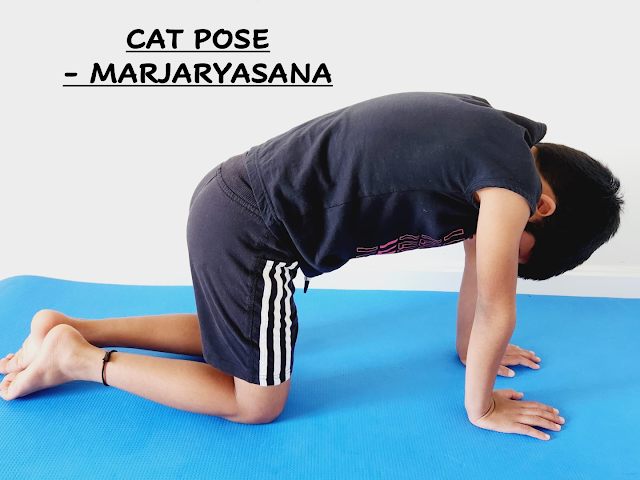PLANK POSE - PHALAKASANA
Plank Pose (Phalakasana), as the name suggests, the body is held in a way that looks like a plank, thin and long. It's also called Kumbhakasana or Dandasana. In sanskrit, kumbhaka means breath retention, and asana means pose. In the traditional practice, before lowering into the low push-up position, the practitioner would hold their breath briefly, which can be either Eight Limbed Pose (Ashtangasana) or Four Limbed Staff Pose (Chaturanga Dandasana). Hence it is called Kumbhakasana. It is commonly used as the fifth transition pose from Crescent Low lunge pose Variation knee of floor to Eight Limbed pose in sun salutation (surya Namaskar). It is a core strengthening pose coming under the category of prone poses.
Plank pose is one versatile pose used in many schools of exercise like Pilates, free floor exercises and the gym. In plank pose, a lot of emphasis is on the core and shoulder muscles. This pose essentially works for someone who wants to take the arms and shoulder strength to the next level in order to do more difficult arm balancing yoga poses like Headstand Pose (Sirsasana), Forearm side plank, Feathered Peacock Pose, Headstand pose wide legs, etc., Even Gym trainers too use this pose in their floor exercises. Phalakasana is considered a base pose as phalakasana variations can be derived from this pose. Phalakasana helps boost energy in the body and hence can be included in flow yoga sequences.
HOW TO DO
- plank pose can be approached from various starting poses. the easiest would be to start in the kneeling position
- from the kneeling down pose, bend over and place the forearms on the ground in front of you
- slide the knees slightly back, straighten your back and raise the buttocks up
- slide the leg back further, till the body is in a straight line. keep the legs off the floor, except for the toes
- use the toes to support the partial weight of the body
- remain in this position for as long as your are comfortable. breathe normally in this position. the body weight is entirely supported by the toes and the forearms
- to release the pose, bring down the legs and let the knees touch the floor. slide your legs further up and then raise yourself up to the sitting position
- lie down in any relaxation pose like shavasana for few minutes. in the plank pose, all the muscles are stretched. this stretch followed by relaxation in the end can help to release stress in the body as well as the mind
- improving upper body strength
- improving core/abdominal strength
- improving spinal stability
- building forearm, wrist and hand strength
- building bone strength, especially in the wrists, for those with osteoporosis
- improving mental focus
- building confidence
- Beginners : 20 - 30 seconds
- Intermediate : 30 sec - 1 minute
- Advanced: 2 minute
- make sure your core in engaged to protect your lower back
- if you have shoulder injuries avoid this pose and replace it with boat pose
- if you have neck injuries you can place a block under your forehead for support
- try a dynamic variation, moving from plank into forearm plank and back up to plank
- alternate the arm you lower down and lift back up with first
- in this challenging variation find a pace that allows you to stay aware of your body and keep breathing
- try the pose with your knees on the mat first
- the more you press down with your forearms the lighter you will be in your body
- squeeze a block between your things as a reminder to keep your legs active and engaged



























2 Comments
Plank stance is a versatile pose that is utilized in many different types of training, including Pilates, free floor exercises, and the gym. The core and shoulder muscles are heavily emphasized in plank position. This pose is mostly useful for people who want to improve their arm and shoulder strength in order to perform more difficult arm balancing yoga poses such as Headstand Pose (Sirsasana), Forearm Side Plank, Feathered Peacock Pose, Headstand Pose Wide Legs, and so on. Thank you for sharing your knowledge! Keep up the good job! Continue to spread the word. Please take a peek at my website.
ReplyDeletemotorcycle accident attorneys near me
Loved this! Super nice post Offers expertplumbing services in kovilpatti including leak repairs, pipe installations, drain cleaning, bathroom fittings, and water tank setup.
ReplyDelete